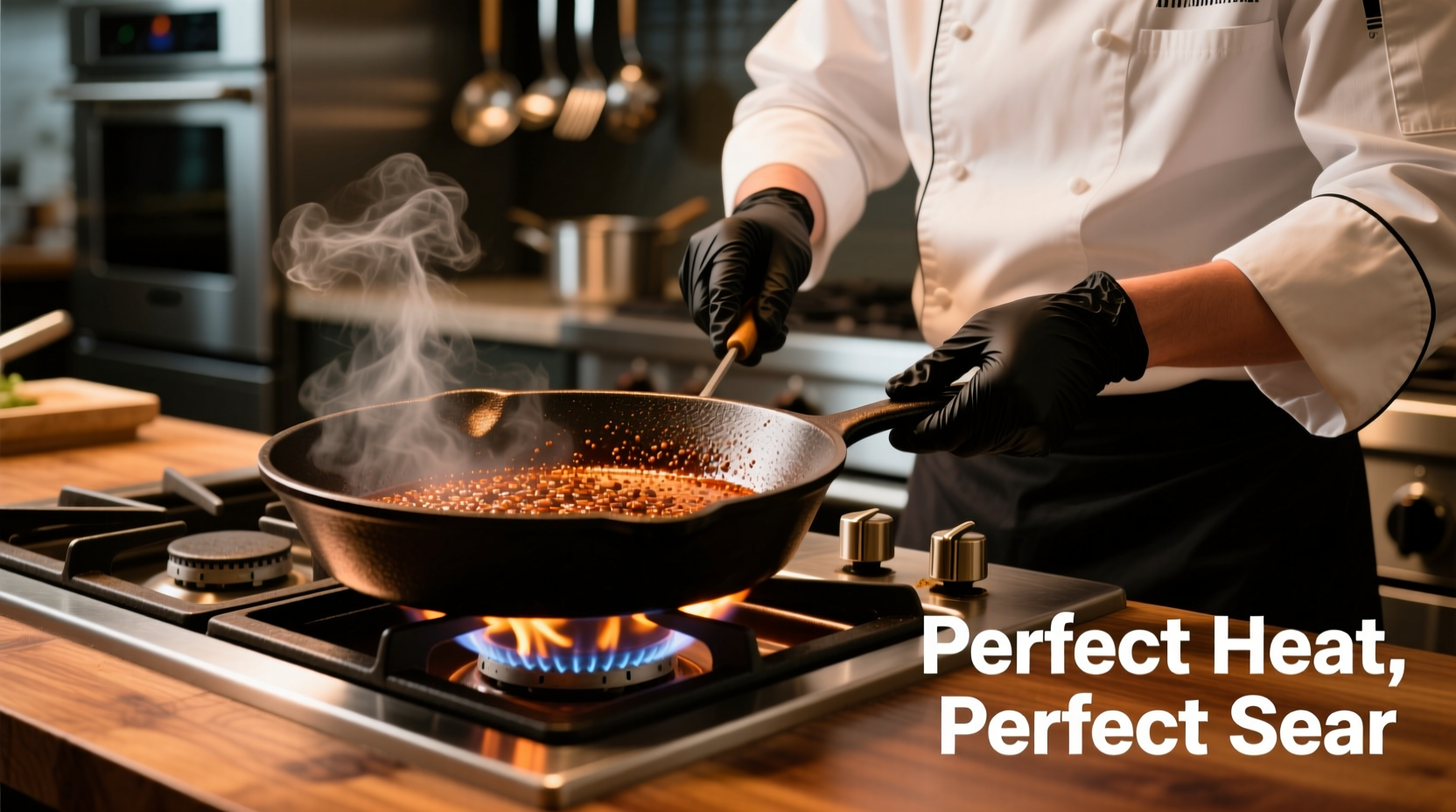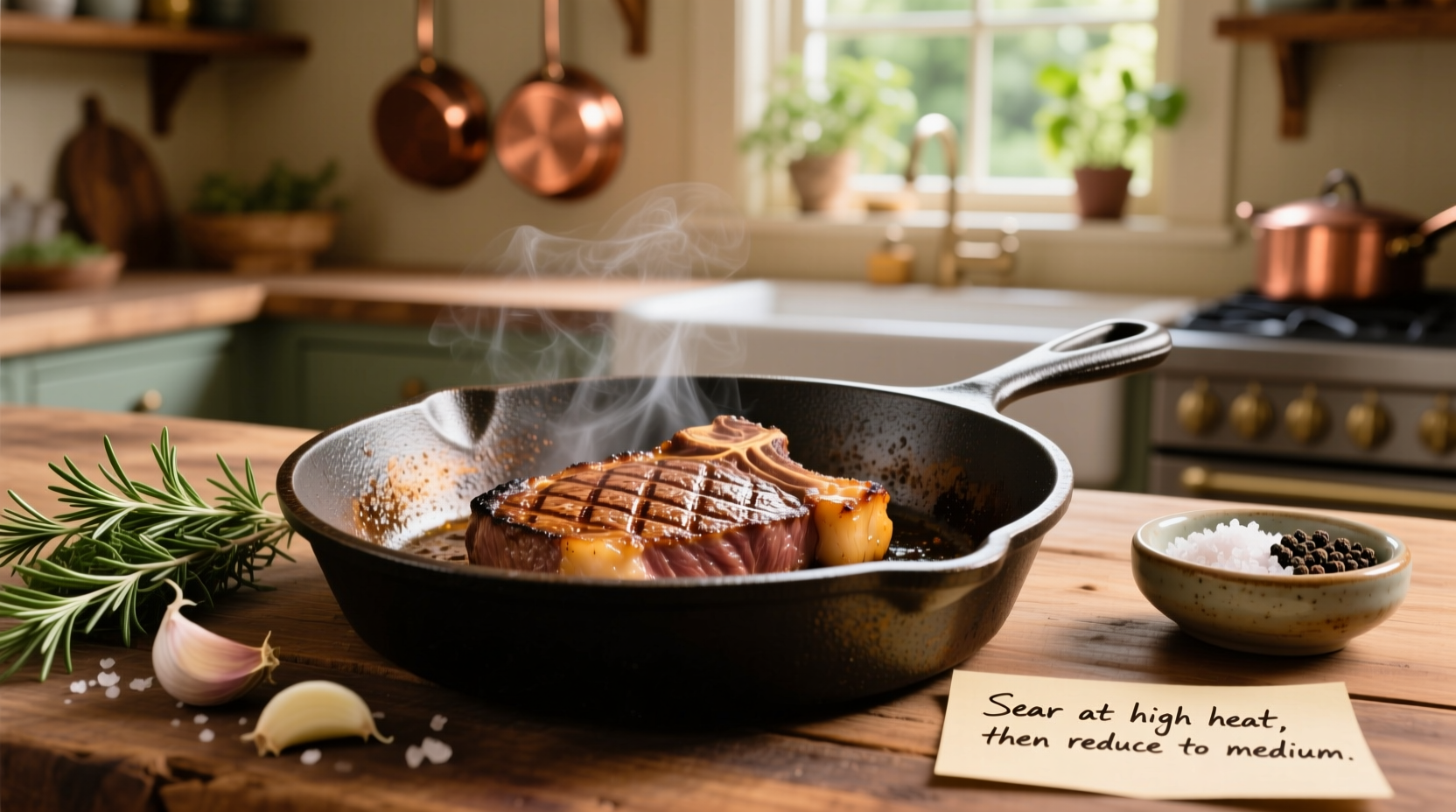Master cast iron cooking with these essential techniques: Properly preheat your skillet for 5-7 minutes on medium heat, use sufficient oil with a high smoke point, and avoid cooking highly acidic foods initially. The ideal temperature range for most cast iron cooking is 300-400°F, creating the perfect Maillard reaction for searing while preventing food from sticking to the naturally non-stick seasoned surface.
The Complete Guide to Cast Iron Skillet Cooking Success
For generations, cast iron has been the workhorse of professional and home kitchens alike. Unlike modern non-stick alternatives that degrade over time, a well-maintained cast iron skillet improves with age, developing a naturally non-stick surface through proper seasoning. This comprehensive guide delivers actionable techniques that transform cast iron from intimidating to indispensable in your cooking routine.
Why Cast Iron Outperforms Modern Cookware
Cast iron's exceptional heat retention creates superior searing capabilities that stainless steel and non-stick pans can't match. The material heats evenly and maintains temperature when food is added, crucial for achieving perfect browning. Unlike Teflon-coated pans that release potentially harmful chemicals when overheated, cast iron is completely inert and safe at any cooking temperature. With proper care, a single skillet can last generations, making it both economical and environmentally friendly.
Essential Pre-Cooking Preparation
Before your first use, properly season your skillet to create that coveted non-stick surface. Modern cast iron often comes pre-seasoned, but reinforcing this layer ensures better performance. Follow this professional technique:
- Wash with warm water and mild soap (contrary to old myths, soap won't damage seasoning)
- Dry thoroughly on the stovetop over low heat
- Apply thin layer of high-smoke-point oil (grapeseed or avocado)
- Bake upside down at 450°F for 1 hour
- Cool completely before first use
| Cooking Task | Recommended Oil | Smoke Point | Seasoning Benefit |
|---|---|---|---|
| Initial Seasoning | Flaxseed or Grapeseed | 225-420°F | Creates hardest polymer layer |
| Daily Cooking | Avocado or Canola | 500-400°F | Maintains and builds seasoning |
| High-Heat Searing | Grapeseed or Sunflower | 420°F | Prevents burning while building seasoning |
This oil comparison table reflects research from the University of California Davis Food Science Department on optimal oil polymerization for cast iron maintenance (foodscience.ucdavis.edu/research/cookware-studies).
Mastering Heat Control: The Cast Iron Secret
Unlike other cookware, cast iron requires deliberate heat management. The key is understanding that cast iron continues cooking after removal from heat due to its thermal mass. Always preheat gradually:
- Medium heat for 5-7 minutes for most cooking tasks
- Test readiness with water droplets that dance across the surface
- Reduce heat slightly before adding food to prevent burning
- Use the handle test: hold your hand 2 inches above skillet - you should feel distinct warmth but not pain

Perfect Protein Cooking Techniques
Cast iron excels at searing proteins, but requires specific techniques to prevent sticking:
- Dry proteins thoroughly with paper towels
- Ensure skillet reaches proper temperature (375°F)
- Add oil, wait 30 seconds for proper heat transfer
- Place food away from you to prevent oil splatter
- Resist moving food until it naturally releases (typically 2-3 minutes)
For steak perfection, the USDA Food Safety and Inspection Service recommends cooking to these internal temperatures: 130-135°F for medium-rare, 140-145°F for medium, and 150-155°F for medium-well (www.fsis.usda.gov/food-safety/safe-food-handling-and-preparation/meat/cooking-meat-done).
Egg Cooking Without the Stick
Many struggle with eggs in cast iron, but proper technique solves this:
- Preheat skillet properly (medium heat for 5 minutes)
- Add 1-2 tablespoons of fat (butter or oil)
- Wait until fat shimmers but doesn't smoke
- Pour in room-temperature eggs
- Use silicone or wood spatula for gentle flipping
For scrambled eggs, the American Egg Board confirms that room-temperature eggs incorporate more evenly and cook more uniformly (www.incredibleegg.org/egg-nutrition/cooking-101/).
What NOT to Cook in Cast Iron (Critical Boundaries)
Understanding cast iron's limitations prevents damage and improves results. Avoid these common mistakes:
- Highly acidic foods (tomato sauce, wine-based dishes) during first 6 months
- Delicate fish that sticks easily until seasoning is well-established
- Extended storage of cooked food in the skillet
- Using metal utensils on new seasoning (wood or silicone preferred initially)
These limitations exist because acidic foods can strip new seasoning, while established seasoning (6+ months of regular use) becomes more resilient. The seasoning process creates a polymerized oil layer that protects both food and skillet.
Troubleshooting Common Issues
Even experienced users encounter problems. Here's how to fix them:
- Food sticking: Increase preheating time, ensure proper oil amount, wait for food to release naturally
- Rust spots: Scrub with steel wool, dry completely, re-season affected area
- Uneven seasoning: Apply thin oil layer and bake upside down at 400°F for 45 minutes
- Smoke during cooking: Reduce heat; new skillets may smoke more until seasoning builds
Advanced Techniques for Seasoned Users
Once comfortable with basics, try these professional methods:
- Transition seamlessly from stovetop to oven for perfect chicken thighs
- Create restaurant-quality pan sauces by deglazing with wine or stock
- Use the lid to control moisture for braising vegetables
- Build flavor layers by cooking multiple components in sequence
Remember that cast iron improves with regular use. Each cooking session reinforces the seasoning, creating better non-stick properties over time. The American Council for an Energy-Efficient Economy notes cast iron's thermal efficiency reduces overall energy consumption compared to other cookware (www.aceee.org/research-blog/2020/03/cookware-energy-efficiency).











 浙公网安备
33010002000092号
浙公网安备
33010002000092号 浙B2-20120091-4
浙B2-20120091-4